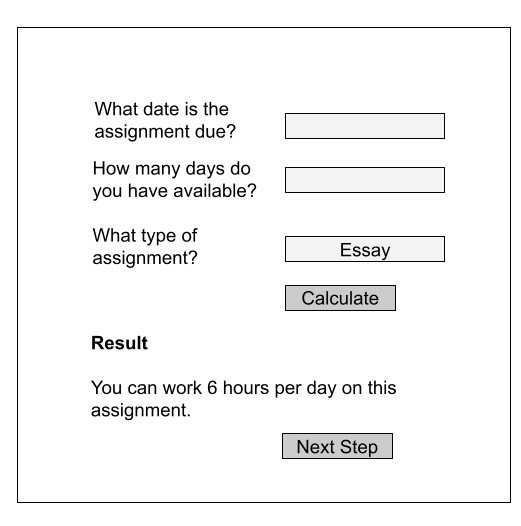Chapter 4: Productivity & tasks
4.1 Introduction
A core part of any learning experience is the process of completing various assignments. The final quality of the work is often dependent on not their ability to understand the work, but on the skills the students have acquired to complete the assignment in a good time frame without overburdening themselves with stress. When considering a learner with additional learning requirements, suddenly the simple process of completing the assignment becomes a little bit more difficult.
In this chapter, we will outline the process of completing assignments and tracking progress to encourage productivity in learners with both organizational difficulties and focus difficulties.
4.2 Why tasks are needed
Many students view an assignment as a large elephant in the room that must be completed to succeed. This often manifests in terms of assignments that are never completed or turned in with below the expected quality level for the individual student. When digging deeper with students with learning difficulties, we can see that reading, writing, and comprehension of assignments are large components of effort required before the process of organizing the workload is even considered.
As a result of this, the organizational element may never be applied, and continuous progress tracking is often overlooked, leading to students who feel their effort is long fruitless process with little success.
The process of digesting an assignment to begin making progress on it always can be considered as a collection of tasks that:
- Outline what they are trying to do.
- Steps involved in doing it.
- Providing steady measurable progress.
Another component that is often needed when students burn out from focusing too hard is to factor in rest time to allow them to recuperate. Some of the difficulties students face can be centered around:
- Writing the point they wish to convey.
- Remember specific pieces of information.
- Follow multiple steps in a procedure.
- Managing the time they have allocated.
- Continue focused and undistracted.
4.3 Gathering the assignment data
Before we begin, we need to define the two most important variables for the task process, the first of these is the number of days the student has available to complete the task and the second is the number of hours per day the student has to work. On a high level, we are also interested in what type of assignment the user is doing, for this example we will assume they are working on a text-based essay assignment.
To get these three pieces of information, we will prompt the student to enter the date the assignment is due, and how many days they have free to complete the work. A wireframe of this first prompt is shown below:

After the student has calculated how many hours per day they can work, the student will then click the Next Step button to move on to begin making fine-grained tasks.